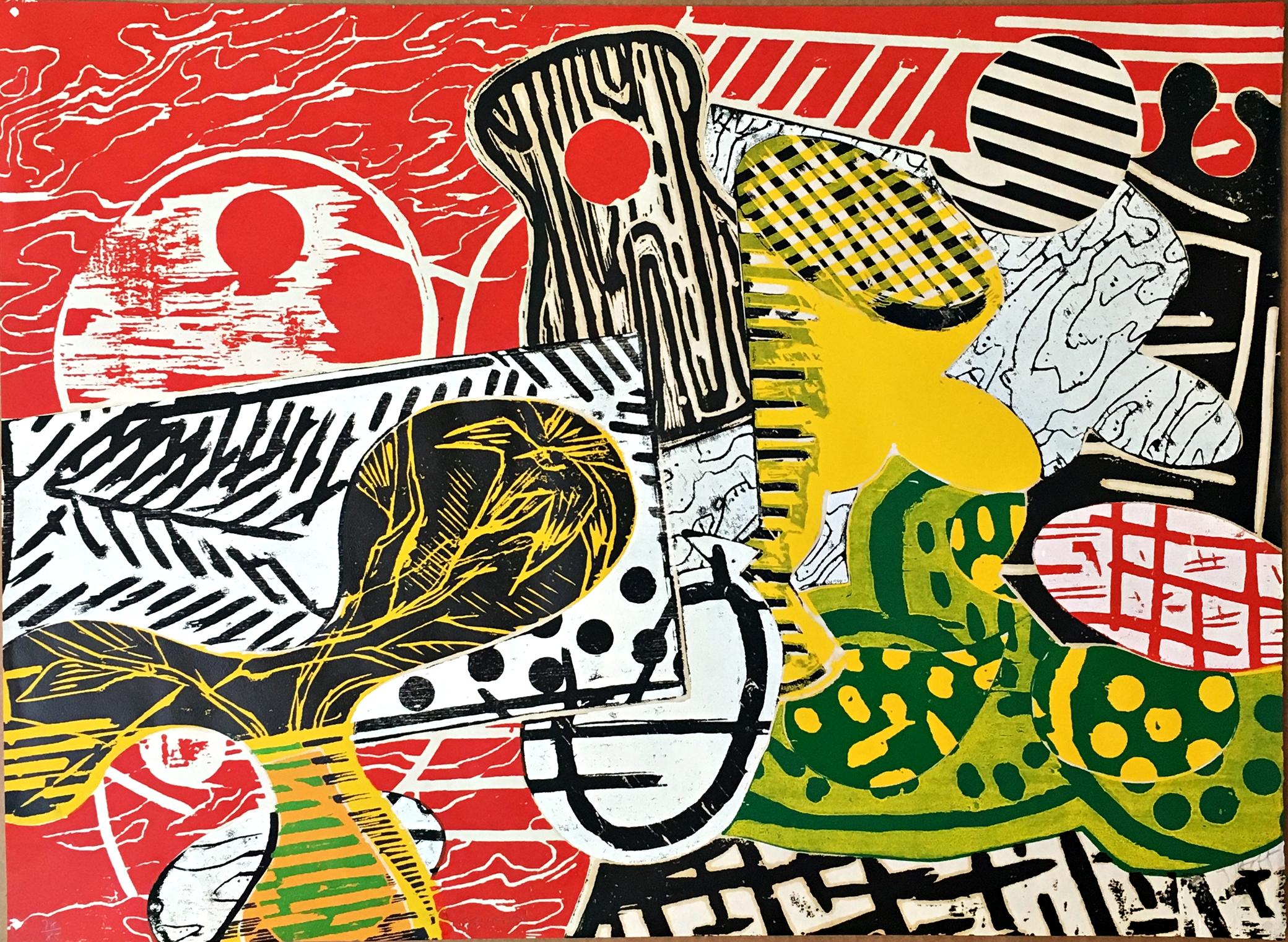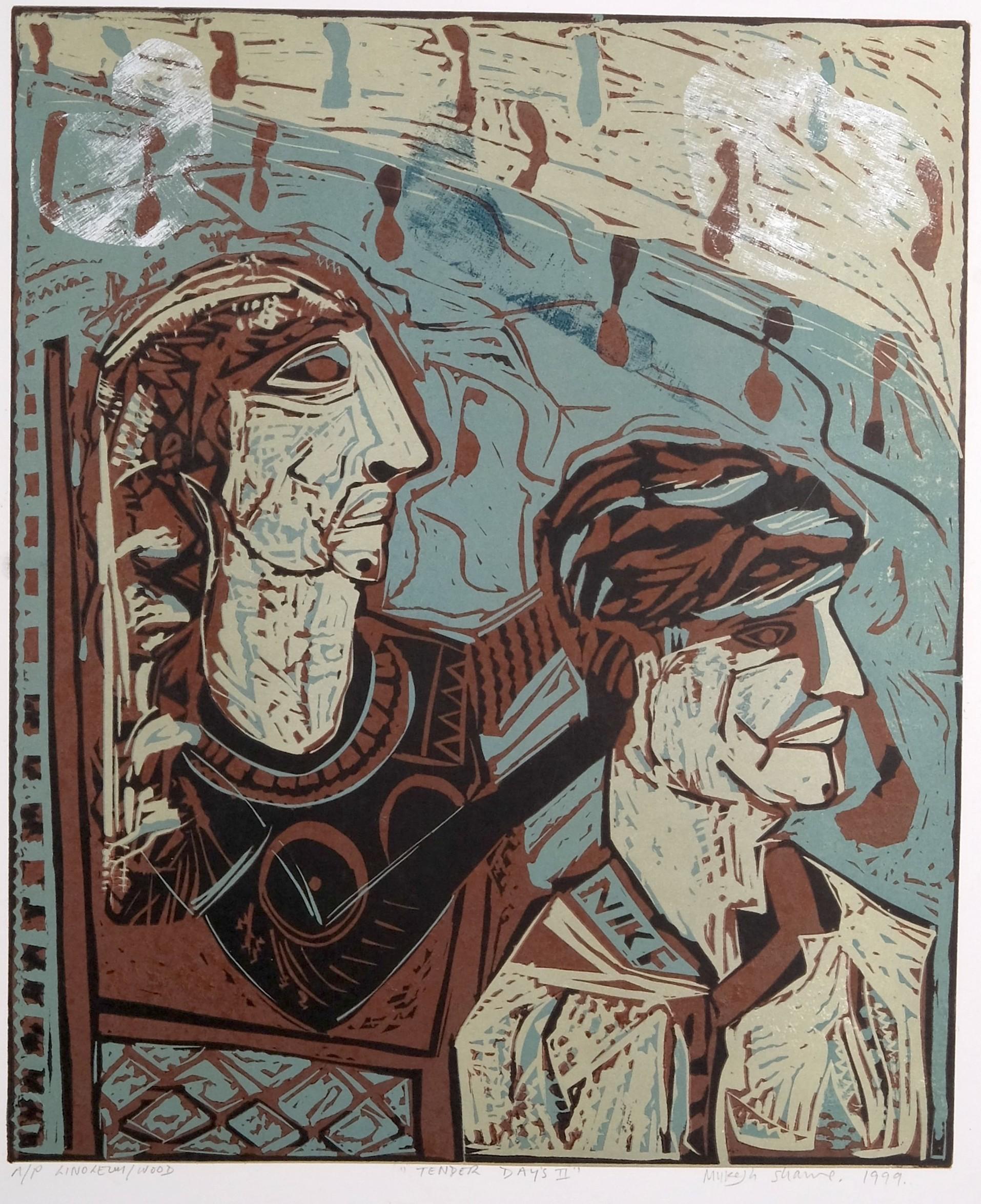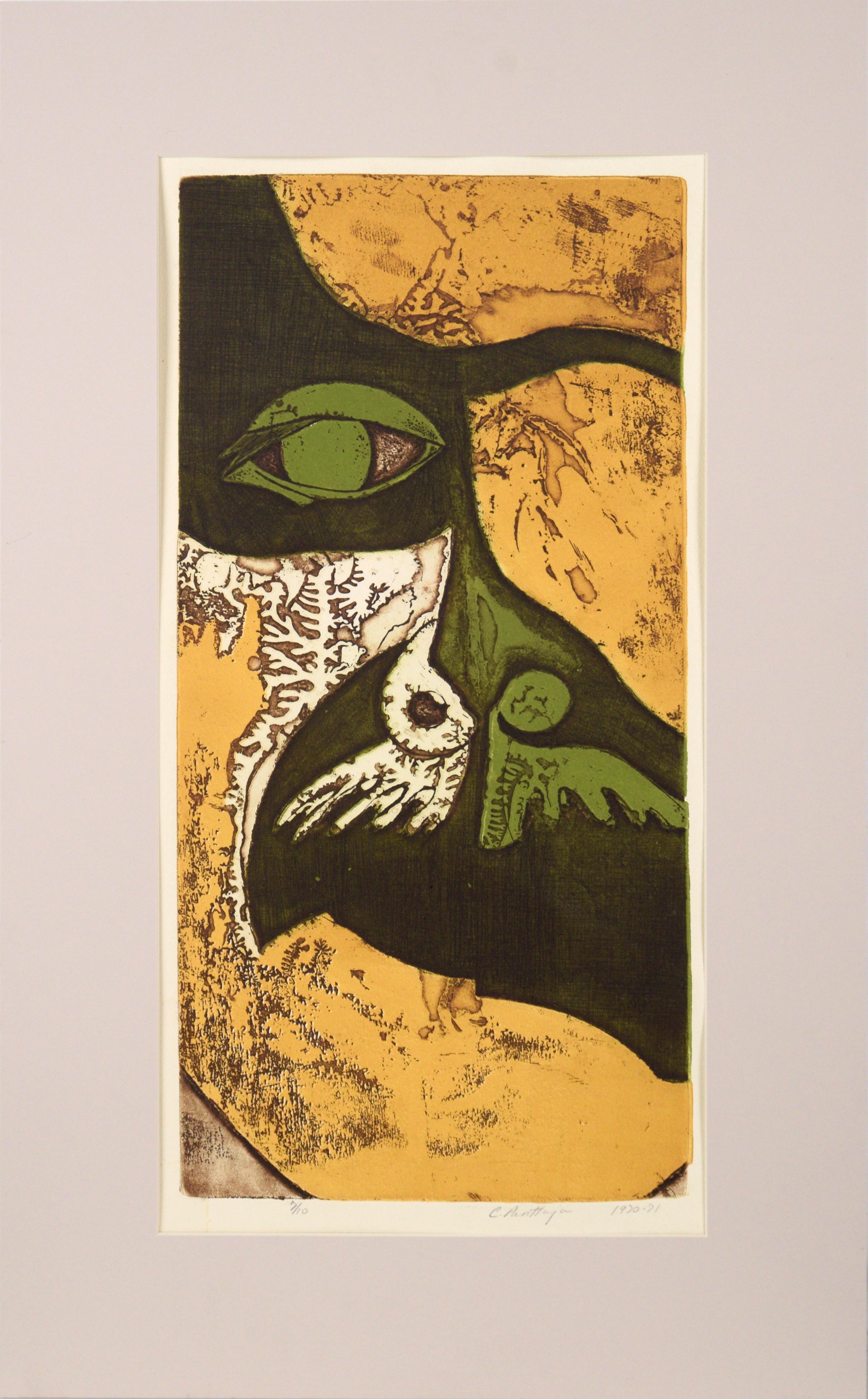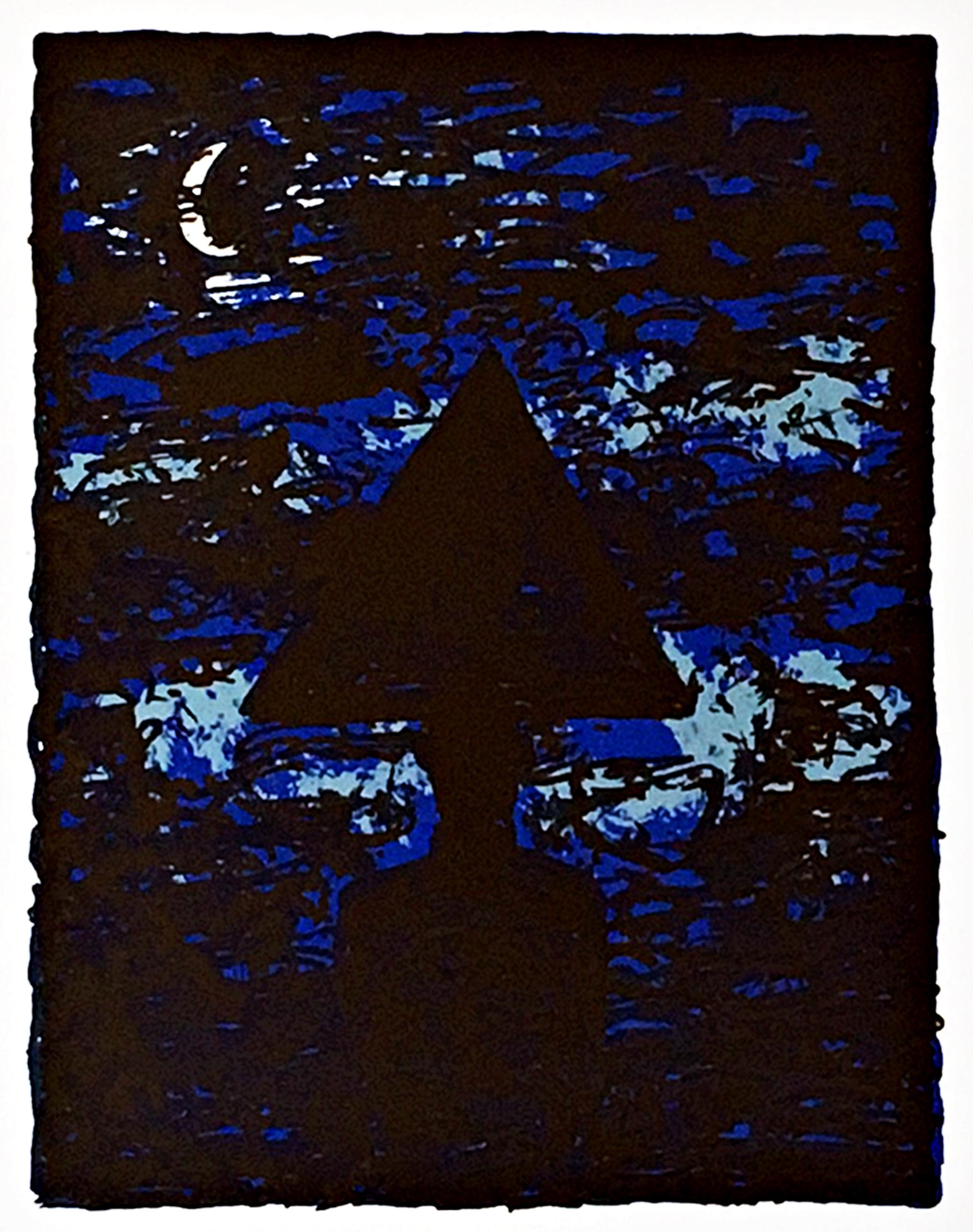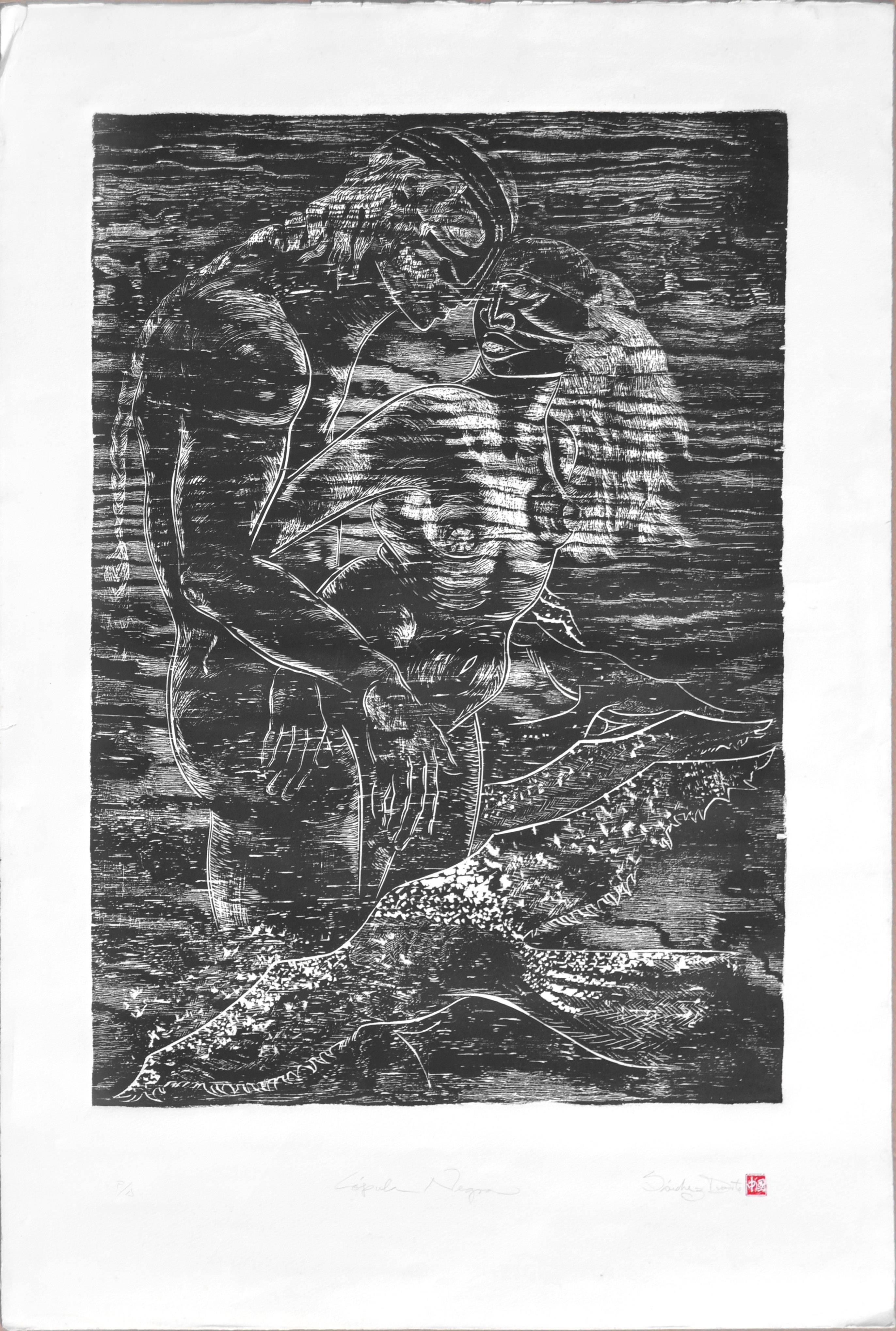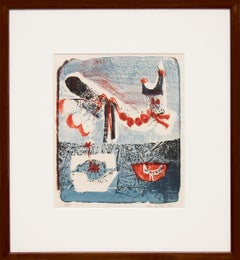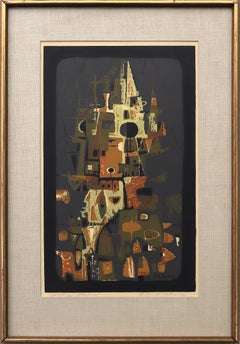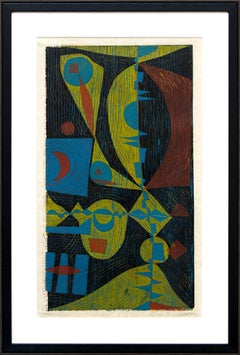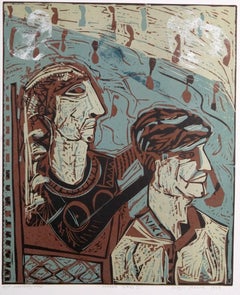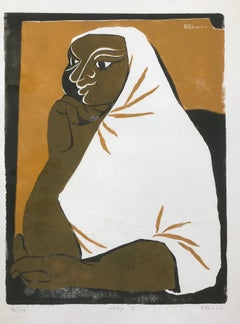
Pillars of the Canyon, 1950s Framed Abstract Colored Print Geometric Figures
View Similar Items
Video Loading
Want more images or videos?
Request additional images or videos from the seller
1 of 12
Hildegarde HaasPillars of the Canyon, 1950s Framed Abstract Colored Print Geometric Figures1951
1951
Price:$795
About the Item
- Creator:Hildegarde Haas (1926 - 2002, American)
- Creation Year:1951
- Dimensions:Height: 21.75 in (55.25 cm)Width: 27.75 in (70.49 cm)Depth: 1.25 in (3.18 cm)
- Medium:
- Movement & Style:
- Period:
- Condition:very good to excellent vintage condition.
- Gallery Location:Denver, CO
- Reference Number:Seller: DCG-245681stDibs: LU2735618681
Hildegarde Haas
Hildegarde Haas studied at the University of Chicago, the Colorado Springs Fine Arts Center under Vaclav Vytacil and the Art Students League.
About the Seller
5.0
Vetted Professional Seller
Every seller passes strict standards for authenticity and reliability
Established in 1979
1stDibs seller since 2013
289 sales on 1stDibs
Typical response time: 13 hours
Authenticity Guarantee
In the unlikely event there’s an issue with an item’s authenticity, contact us within 1 year for a full refund. DetailsMoney-Back Guarantee
If your item is not as described, is damaged in transit, or does not arrive, contact us within 7 days for a full refund. Details24-Hour Cancellation
You have a 24-hour grace period in which to reconsider your purchase, with no questions asked.Vetted Professional Sellers
Our world-class sellers must adhere to strict standards for service and quality, maintaining the integrity of our listings.Price-Match Guarantee
If you find that a seller listed the same item for a lower price elsewhere, we’ll match it.Trusted Global Delivery
Our best-in-class carrier network provides specialized shipping options worldwide, including custom delivery.More From This Seller
View All1966 Signed Limited Edition Abstract Color Lithograph by Lewis Lee Tilley
Located in Denver, CO
This exceptional 1966 American Modernist abstract color lithograph by renowned artist Lewis Lee Tilley (1921–2005) exemplifies mid-20th-century abstraction with a bold use of color, form, and composition. Pencil-signed by Tilley and numbered 4 of only 5 limited edition prints, this rare lithograph is highly collectible and showcases the artist’s distinctive modernist style.
The artwork features a dynamic interplay of vibrant colors and abstract shapes that capture Tilley’s mastery of color theory and geometric abstraction. Perfectly suited for collectors of American Modernist prints or those seeking a striking, sophisticated addition to a contemporary collection.
Presented in a custom frame, the piece measures 29 x 23 inches overall, with an image size of 12 ½ x 10 ½ inches, making it a visually impactful artwork ideal for display in galleries or modern interiors.
Provenance:
Formerly part of the Fremont Center for the Arts collection, Canon City...
Category
1960s Abstract Abstract Prints
Materials
Lithograph
Gothic Towers" – 1950s Abstract Serigraph by Eduardo Chavez, Framed Modern Print
By Edward Chavez
Located in Denver, CO
This 1950s serigraph on paper, titled "Gothic Towers" by 20th century artist Edward (Eduardo) Arcenio Chavez (1917–1995), showcases a striking abstract tower structure in bold shades of orange, brown, green, and white. The artwork is presented in a custom frame with outer dimensions of 25 ¼ x 17 ½ x 1 ½ inches, while the image sight size measures 18 ½ x 11 ¼ inches.
About the Artist – Eduardo Chavez...
Category
1950s Abstract Abstract Prints
Materials
Screen
1930s Modernist Print by Hilaire Hiler: Indian with Bow in Fox Costume Artwork
By Hilaire Hiler
Located in Denver, CO
This vintage 1934 color serigraph (silkscreen print) by Hilaire Hiler (1898-1966) depicts a Native American figure dressed in a fox costume and holding a bow, showcasing a stylized feather headdress and bold black, red, and white color contrasts. Created during the WPA era, this modernist print reflects Hiler's semi-abstract approach to Native American themes. The print is pencil signed by the artist in the lower right margin and titled on the verso.
About the Artist, Hilaire Hiler:
Hilaire Hiler was an influential New Mexico artist known for his modernist style and exploration of Native American subjects. Born in St. Paul, Minnesota, Hiler studied at prestigious art institutions such as the University of Paris and Pennsylvania Academy of the Fine Arts before moving to Paris in 1919. Hiler was active in the European avant-garde scene, supporting himself as a jazz musician.
In 1934, he returned to America, where he was commissioned by the Works Progress Administration (WPA) to create murals for the Aquatic Park...
Category
1930s American Modern Abstract Prints
Materials
Screen
Mid-Century Modern Abstract Woodcut Print, Geometric Fine Art in Color
By Edward Marecak
Located in Denver, CO
This original mid-century modern woodcut print on linen, titled "Shapes", is by renowned American artist Edward Marecak (1919–1993). A striking example of his abstract work, this pie...
Category
20th Century Abstract Geometric Abstract Prints
Materials
Woodcut
Modern Minimalist Abstracts in Blue, Gray, White & Red – 3 Framed Monotypes
Located in Denver, CO
This striking set of three original abstract monotypes by acclaimed Denver modernist Wilma Fiori (1929–2019) showcases her signature use of color and form. Rendered in a refined pale...
Category
20th Century Abstract Abstract Prints
Materials
Monotype
Group of 5 1980s Abstract Lithographs, Red & Black American Modern Art Prints
By Dale Chisman
Located in Denver, CO
This striking group of five abstract lithographs, signed and individually titled by renowned artist Dale Chisman, was created in 1987. The lithographs feature a captivating mix of re...
Category
1980s Abstract Abstract Prints
Materials
Lithograph
You May Also Like
Squash scarce Abstract Expressionist woodcut print, Signed/N, top female artist
By Judy Pfaff
Located in New York, NY
Judy Pfaff
Squash, 1985
Woodcut on wove paper
Signed, numbered 78/85, dated and titled on the front with artist's and publisher's blind stamps.
21 3/4 × 29 3/4 inches
Publisher
Cente...
Category
1980s Abstract Expressionist Abstract Prints
Materials
Woodcut
Figurative Couple India Ltd Ed A/P Linocut Print Tender Days II Turquoise Brown
By Mukesh Sharma
Located in Norfolk, GB
There is a natural and raw understanding in Mukesh Sharma’s prints that depict, and are influenced by, the Rajastani communities of his home town in rura...
Category
1990s Abstract Figurative Prints
Materials
Printer's Ink, Woodcut, Archival Ink, Archival Paper, Archival Pigment
Medaillon (Edition 52/100)
By Eberhard Dänzer
Located in New York, NY
Eberhard Dänzer (German, 1938-2005), "Medaillon" Edition 52/100, Abstract Woodcut signed and numbered in Pencil, 14.50 x 18.75 (In Frame 27.25 x 32.50) , Late 20th Century, 1963
Co...
Category
1960s Abstract Expressionist Abstract Prints
Materials
Woodcut
Goldy 1 (Edition 76/100)
Located in New York, NY
Tassow Brhanu (Ethiopian, 1937- ), "Goldy 1" Edition 76/100, Abstract Figurative Woodcut Print numbered and titled in Pencil, signed in Print, 18.50 x 13.25 (Image: 16 x 11.25), Mid ...
Category
Mid-20th Century Abstract Abstract Prints
Materials
Woodcut
Face with a Mustache - Abstracted Lithograph by Cathleen Panttaja
Located in Soquel, CA
Face with a Mustache - Abstracted Lithograph by Cathleen Panttaja
Hip Woodcut Print done at the height of the Flower Power 60s, of a man with a large Moustache. Cathleen Panttaja (Am...
Category
1970s Abstract Impressionist Figurative Prints
Materials
Paper, Ink, Woodcut
Untitled abstraction, woodcut, Signed/N, Art Against AIDS, British Pop pioneer
By Derek Boshier
Located in New York, NY
Derek Boshier
Untitled, from the Art Against AIDS Portfolio, 1988
Woodcut on paper with deckled edges
Hand signed, numbered 38/50 and dated on lower front with printer's and publishe...
Category
1980s Abstract Abstract Prints
Materials
Woodcut, Pencil
